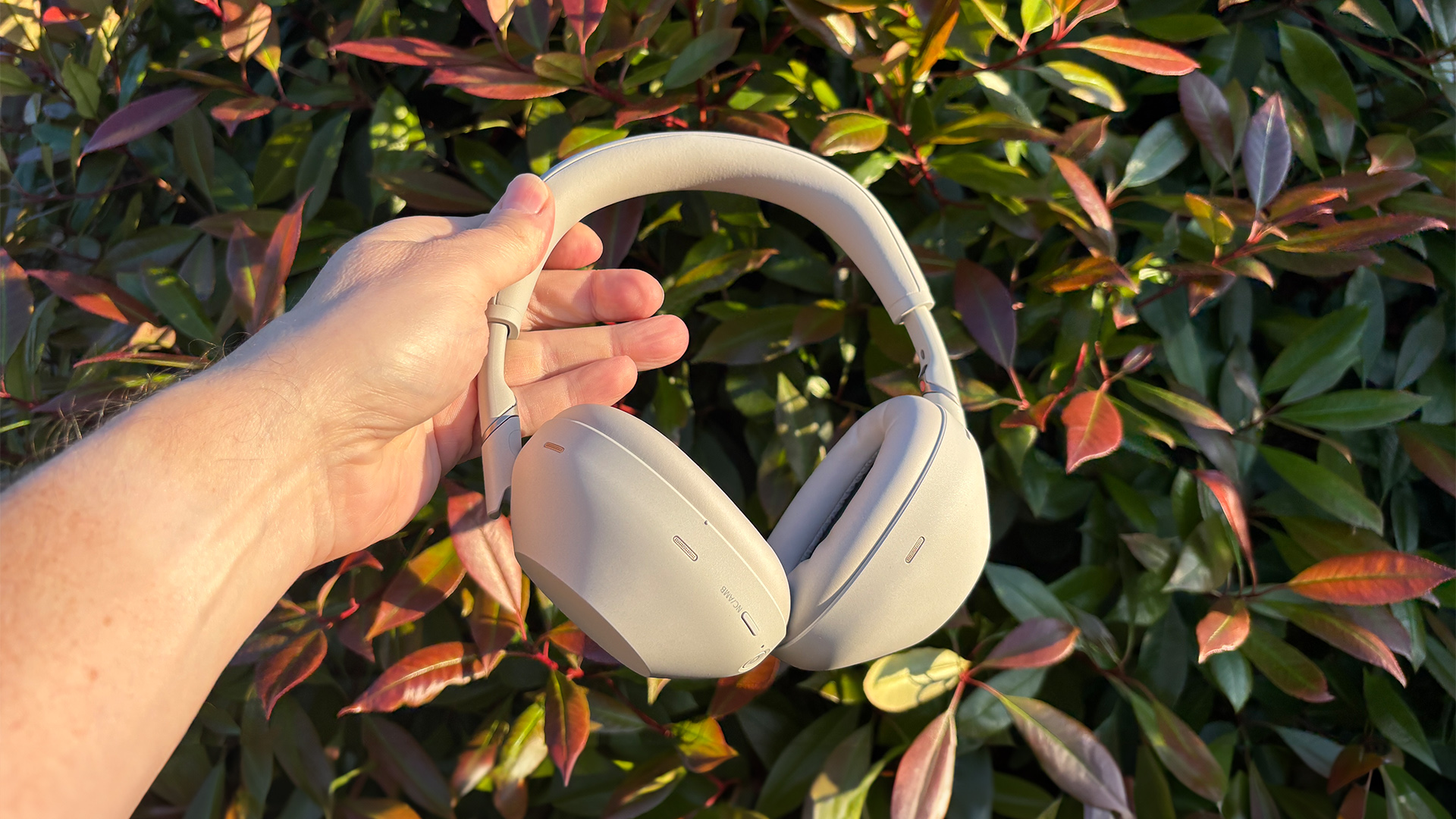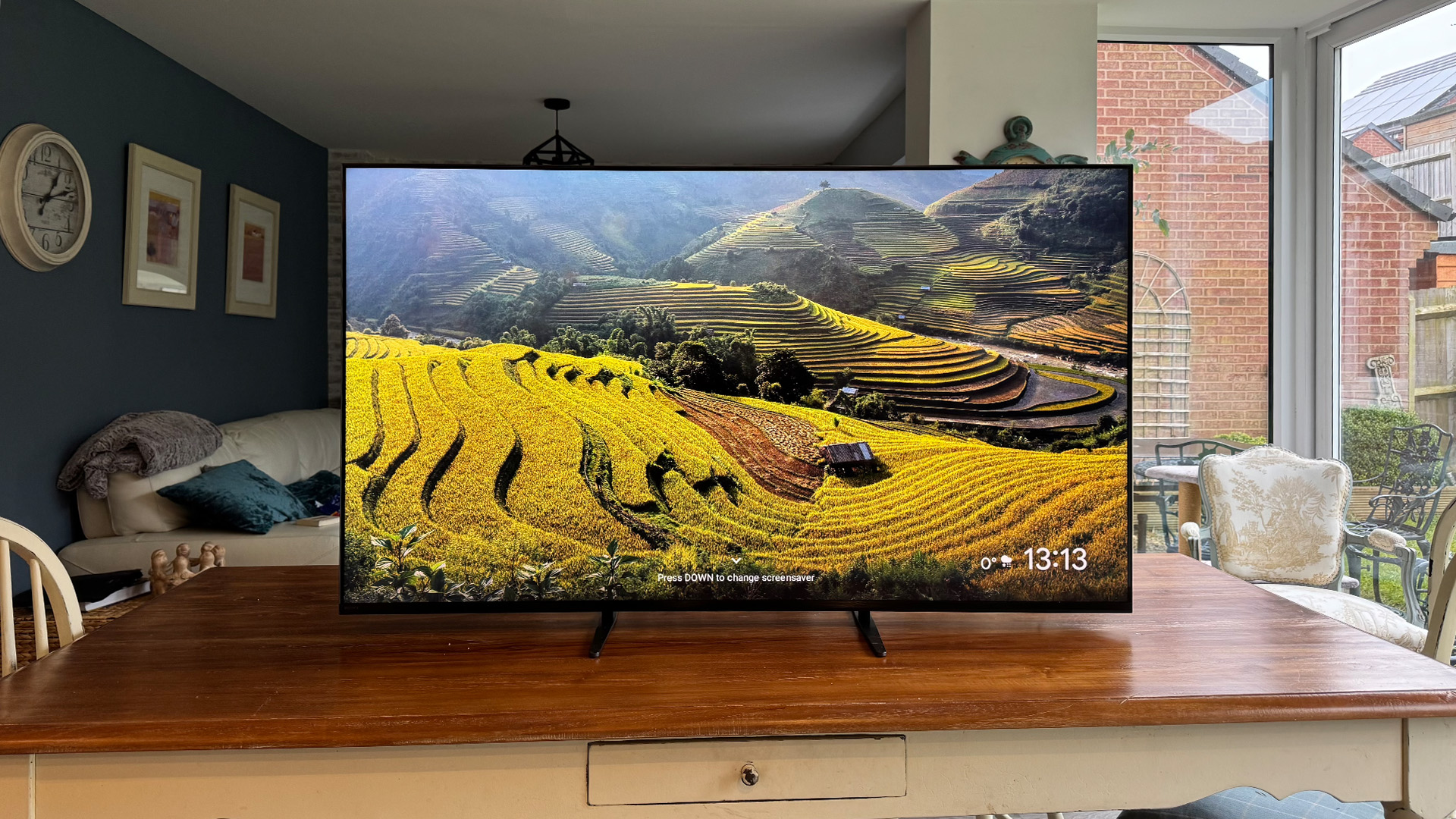What Hi-Fi? Verdict
Sony’s wireless headphones deliver a performance more than befitting a flagship pair of wireless headphones. Comfort levels are great, they’re nice to use, ANC is excellent, call quality is class-leading, and sound quality can match anything at this level. Simply sensational.
Pros
- +
Exceptional levels of detail
- +
Great sense of dynamism
- +
Spacious, musical sound
- +
Superb ANC and call quality
Cons
- -
No aptX HD support
- -
Case is still on the large side
- -
No audio via USB-C
Why you can trust What Hi-Fi?
In the world of premium wireless headphones, Sony has established itself as the brand for whom the hype machine seems to kick into overdrive every time there’s a rumbling of a new pair coming to market.
And it’s not hard to see why. Sony’s track record in the field over recent years is second to none, with multiple five-star pairs setting new benchmarks for rival brands to try and beat. Sony’s current wireless offerings are arguably its best ever, and that includes its budget options too.
This makes the Sony WH-1000XM6 a huge deal, not least because the last time we saw a new flagship pair of wireless headphones from the Japanese tech giant was 2022.
In those three years, Sony has been very busy behind the scenes. Design, features, sound quality, noise cancelling, call quality. You name it, Sony has revisited it for the WH-1000XM6 to try and keep one step ahead of the competition.
It’s all well and good claiming positive changes, but the proof is in the testing. Are these Sony’s best wireless headphones to date? Read on to find out…
Price
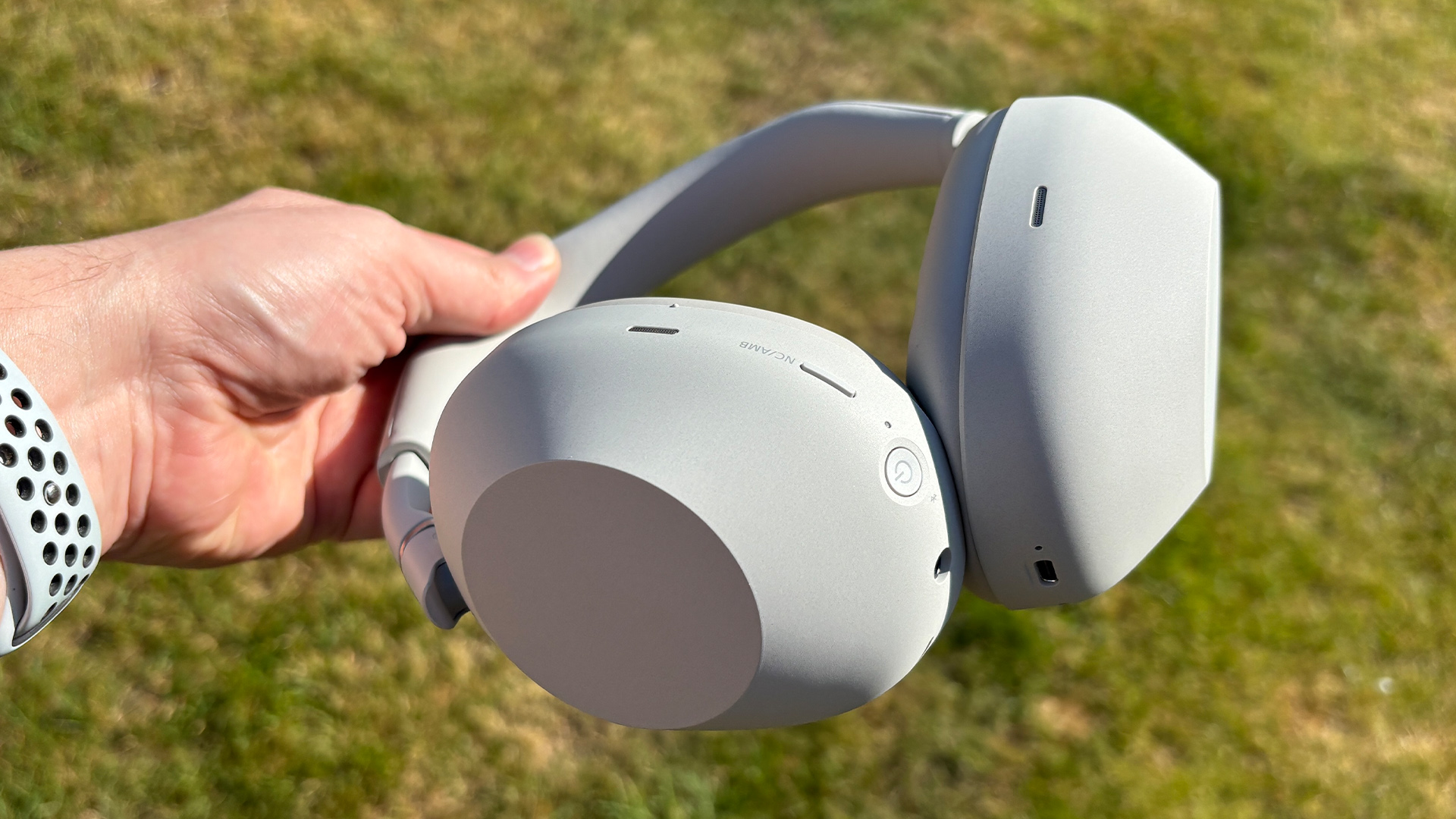
The Sony WH-1000XM6 cost £400 / €450 / $449 / AU$699. This is an increase over the previous flagship, the WH-1000XM5, which we originally tested at £380 / €420 / $399 / AU$550.
Key rivals around this money come in the shape of the five-star Bose QuietComfort Ultra Headphones (£450 / €500 / $429 / AU$649), which currently boast some of the best ANC in the business, and the newer Bowers & Wilkins Px7 S3 (£399 / €429 / $TBC / AU$699) which have seriously impressed us with their audio quality.
The latest hi-fi, home cinema and tech news, reviews, buying advice and deals, direct to your inbox.
If you want to move up a level, you also have the Apple AirPods Max, which cost £549 / $549 / AU$899 when we first reviewed them. The Bose, Apple and Sony XM5 models have all been out for some time, which is why you can find discounts if you shop around online.
Design
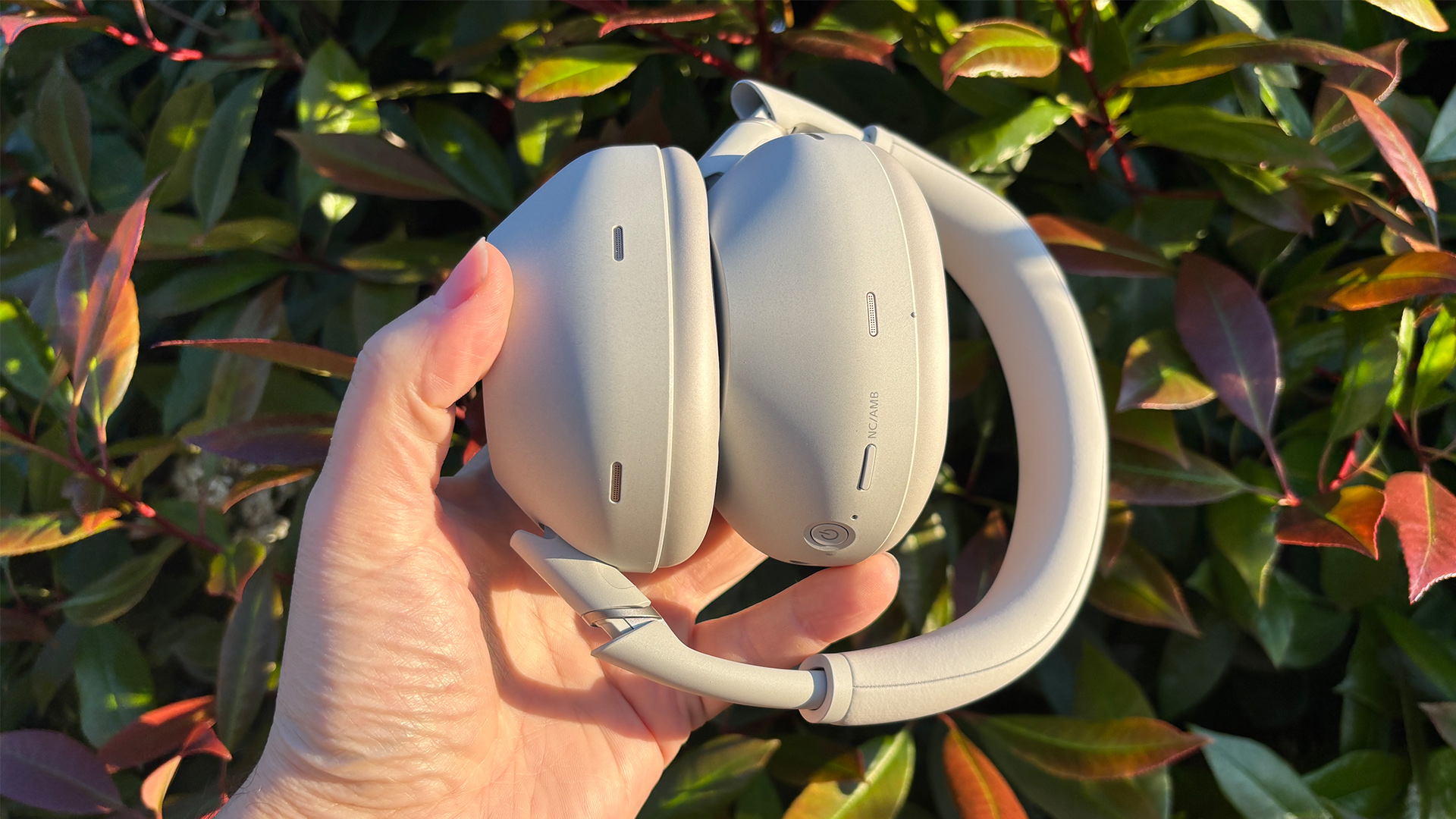
Although the WH-1000XM6 obviously share DNA with their predecessors, Sony has pretty much gone back to the drawing board, with multiple changes made to the design based on its own perceptions and customer feedback.
The headline news is that hinges make a return on the XM6. The previous generation was quite rigid in its construction and couldn’t be folded away, unlike the Bose QuietComfort Ultra Headphones.
The stainless steel hinges at the end of each sliding arm are made using an advanced metal injection method and mean the XM6 can be folded up into a ball – this makes them slightly easier to carry around or fling into a bag.
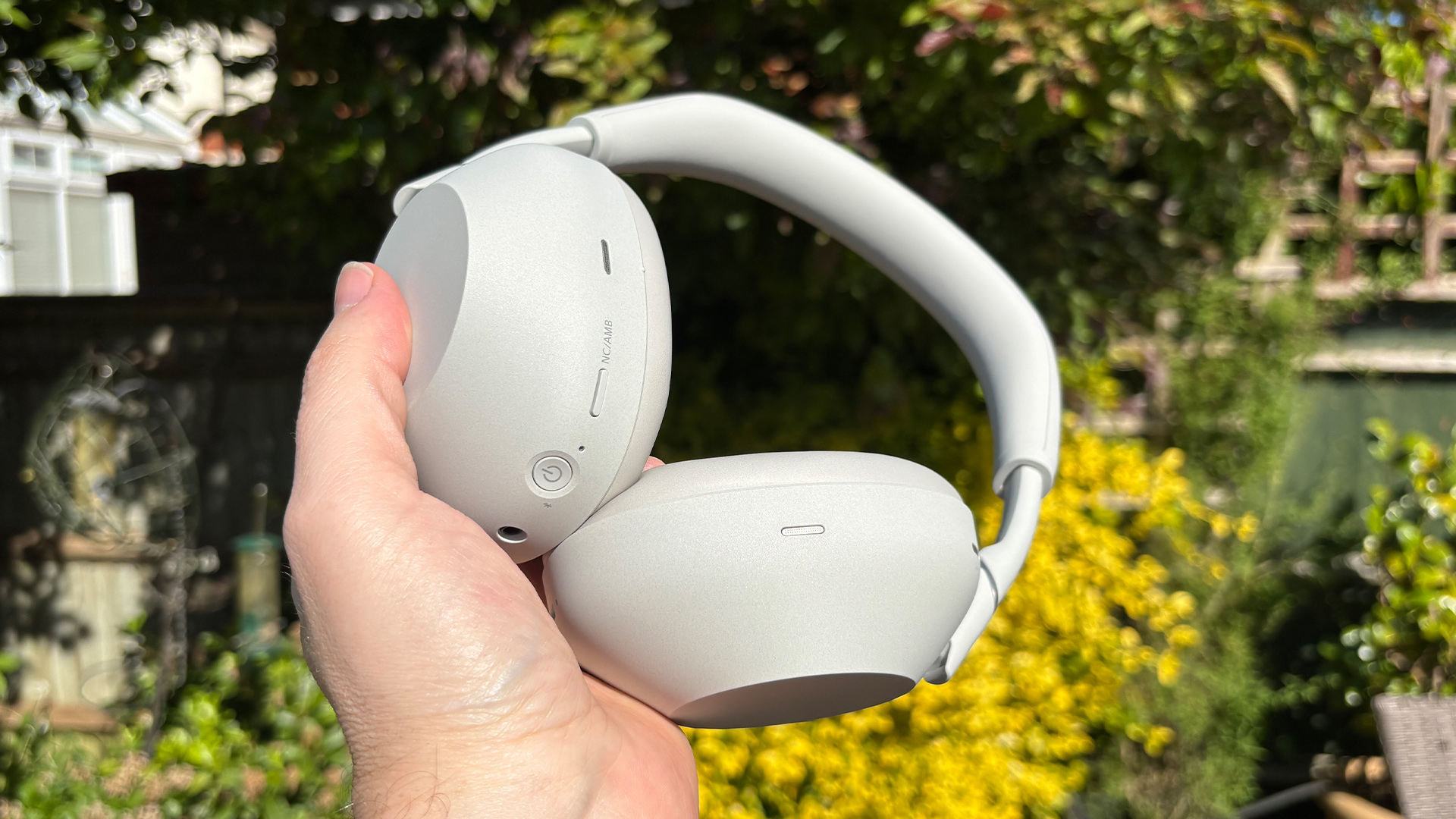
Bluetooth SBC, AAC, LDAC, LC3
Battery life 30hrs
Charging USB-C
Transparency mode? Yes
Built-in mic and controls? Yes
Finishes x 3 (Black, Silver, Midnight Blue)
Weight 254g
However, the design of the new case (which now has a magnetic clasp and opens like a book) still requires you to store them flat, which is a shame. It isn’t much smaller than the case for the WH-1000XM5, but it is easier to open.
Move up to the Sonys’ headband and you’ll see it is now wider and flatter than that of the WH-1000XM5. This is an attempt to improve comfort, and during testing we don’t find that the headband makes its presence felt. It’s also an asymmetrical design to try and make it more apparent which way round the headband should go.
If you’re ever in doubt, the single seam of the material wrapped around the headband should face the back of your head.
The sliders are still noiseless and stepless, and together with the angle of the earcups, we manage to get a good, comfortable fit during testing. A couple of members of our test team did feel as though they could twist out of shape when trying to get the earcups in place, though.
One thing you will notice is that the WH-1000XM6 fit more snugly than the XM5. That’s because the clamping force has been increased for the new model to improve isolation for the user and help the ANC work better.
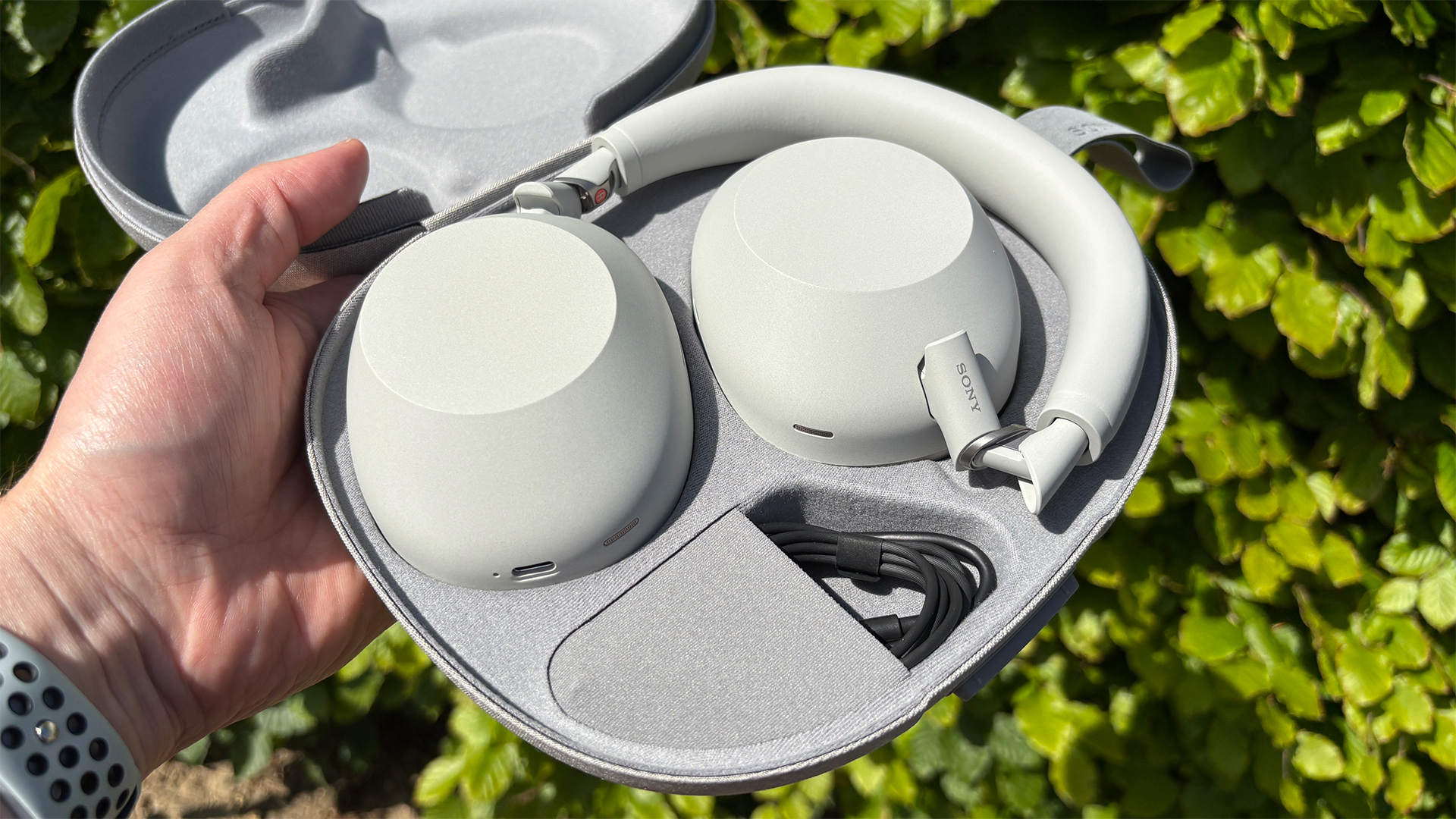
We found the force to be nicely judged with a slightly firmer feeling from the bottom section of the earcups, but they don’t put our ears under any undue strain, even those among our test team who wear glasses. We didn’t find the pleather material made our ears overheat either.
At first glance, the earcups don’t look a million miles away from those on the previous generation, but whereas on the XM5 there was a seam running down the edge, the cups on XM6 are seamless and all one piece. They also appear to be slightly rounder, which is reflected in the circular outer surface of each cup. XM5 appear to be slightly more rectangular.
A small design change worth pointing out is that the power button is now circular and slightly recessed. It’s a subtle but useful change – your thumb can track it down quicker than the thin rectangular button on the WH-1000XM5.
Touch controls are still available on the surface of the right earcup. Tapping, sliding and holding are the order of the day here. If you find yourself accidentally catching them when moving the headphones, there is the option to turn the panel off completely in the Sony Sound Connect app.

Inside each earcup is a newly developed 30mm ‘soft edge’ dome driver which Sony claims, when combined with the headphones’ QN3 processor, not only ups audio quality, but also ANC performance.
It’s the same size as the driver found in the WH-1000XM5, and is made from the same carbon fibre composite material, which is used for its lightness and rigidity.
The earpads seem similar in size to those on the XM5 and you have three finishes of headphones available at launch: silver, black and midnight blue. The WH-1000XM6 introduces a fingerprint-resistant material to the headphones, as the darker finishes on the previous generations did seem susceptible to greasy paw prints.
Interestingly, Sony confirmed to us that the actual finish of the headphones is slightly different depending on the colour.
Our review sample is the silver model, and it feels like more of a subtly textured plastic finish when compared to the black and midnight blue finishes, which have a smoother appearance.
At the time of writing, the finish has emerged unscathed from our testing, but we will be interested to see how it responds to bumps and scuffs over the coming weeks (which we will report back on) compared to the darker versions.
For this light finish at least, we feel like it will probably pay to keep them in their case when not in use.
Features
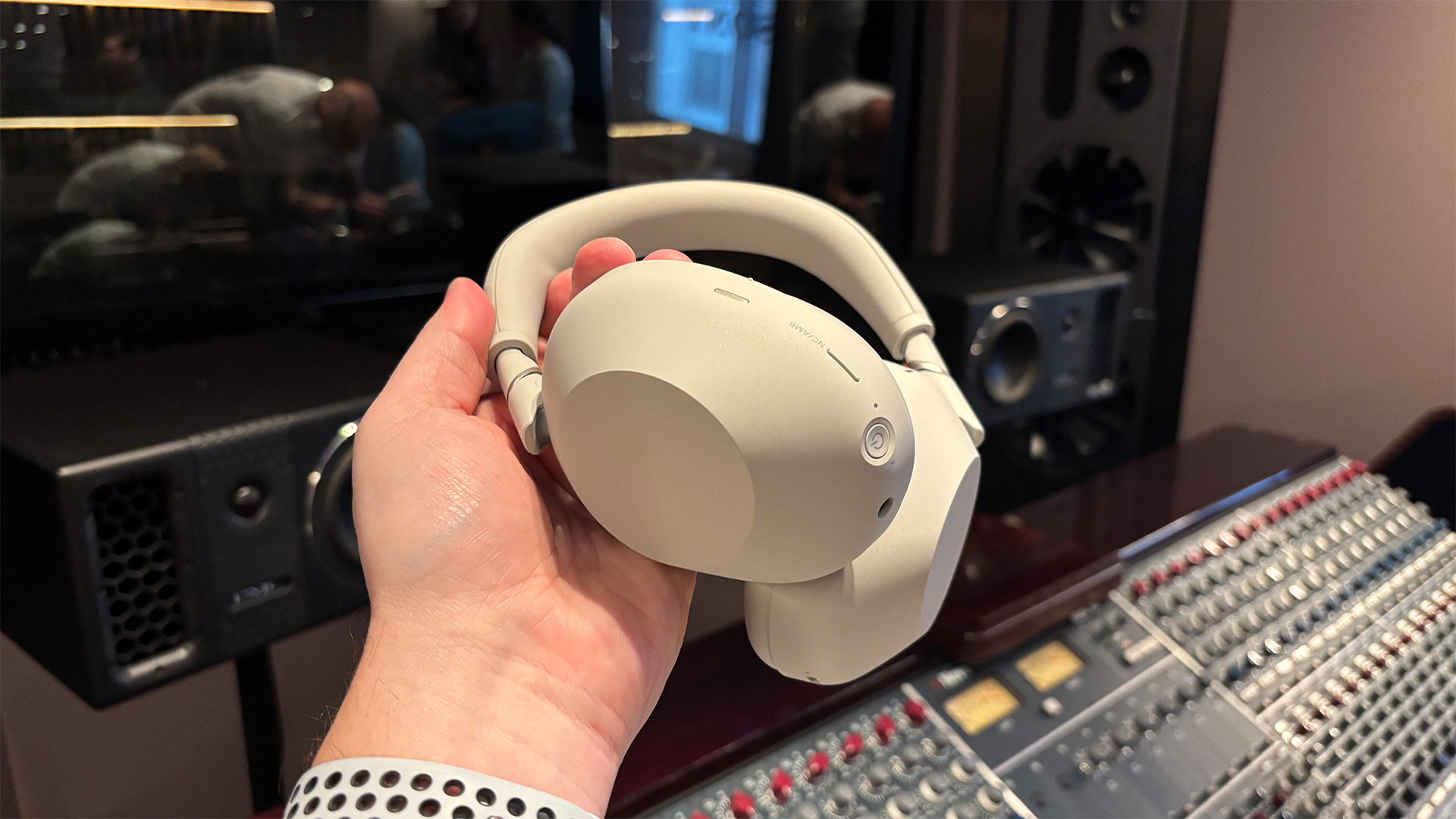
Powering the WH-1000XM6 is Sony’s new HD Noise Cancelling Processor QN3. The WH-1000XM5 launched with the QN1 chip, which means Sony has skipped a generation for its new flagship. On paper it sounds like quite the jump, with Sony claiming the new processor to be a whopping seven times faster.
QN3 also includes what Sony calls a ‘look-ahead noise shaper’ to improve the digital-to-analogue process by reducing distortion and improving dynamics.
Elsewhere on the processing front, Sony’s DSEE Extreme sound enhancement engine returns from the XM5 to help improve poor-quality digital audio files to near high-res quality.
In an interesting move for the WH-1000XM6, Sony has borrowed some of the tech found in its premium Walkman range, including products like the WM1ZM2. This includes its low phase noise crystal oscillator to help improve timing and the use of gold-infused solder in certain parts of the circuit.
Sony has also employed its learning from its Walkmans to optimise components and circuitry to minimise crosstalk and interference.
Battery life for the WH-1000XM6 remains identical to the previous generation at 30 hours with Bluetooth and active noise cancelling (ANC) both turned on. The fact that there hasn’t been an increase doesn’t come as a major surprise given the introduction of a more powerful processor.
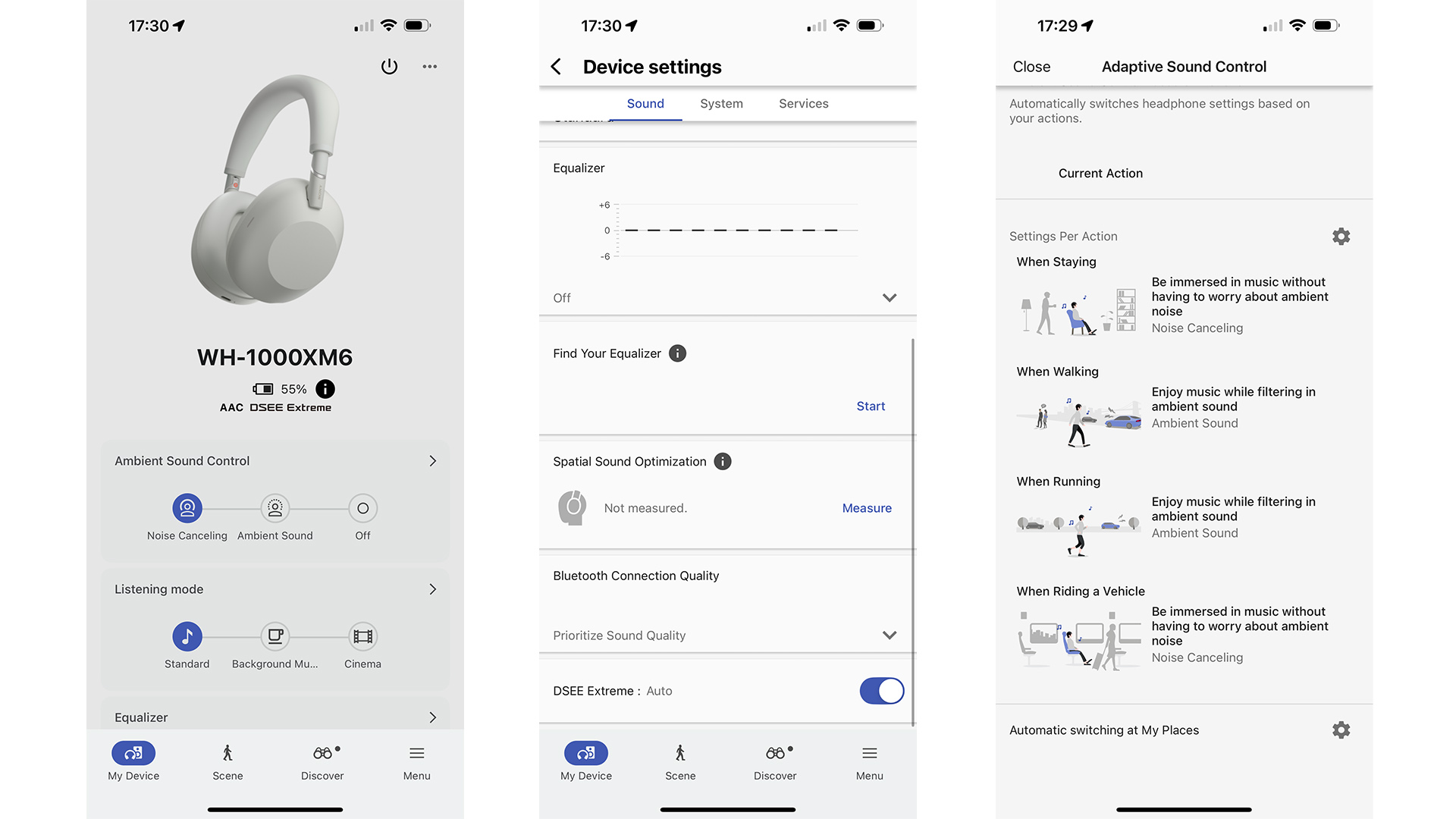
If you own a USB-PD charger, a three-minute charge will get you three hours of playback. And, for the first time on Sony’s flagship headphones, you can listen to music while you charge them. You still can’t listen via a wired USB-C connection, though.
Other new features for the WH-1000XM6 include 360 Reality Audio Upmix for Cinema, which adds Sony’s spatial audio processing to any content you’re watching in stereo. There’s also a new ten-band equaliser for anyone who wants to take advantage of extra customisation options and tweak the sound of the XM6 more specifically. There’s also a new Gaming EQ for casual gamers.
As with the WH-1000XM5, there’s SBC, AAC, LDAC support and high-res wireless certification – the new model also adds Bluetooth LE Audio and Auracast support to the spec list.
Bluetooth Multipoint is available for two devices and works very well – you can have them simultaneously connected to the Sonys and switch between them seamlessly, for example if you’re watching a video on your laptop but need to switch to taking a call on your smartphone.
Sony’s Speak-To-Chat feature returns, which drops the volume level when you start talking. It can come in handy when you want to start a conversation but there is still a slight delay between when you start talking and the tech kicking in.
Quick Attention Mode is also back, which allows you to hear ambient sounds straight away by placing a hand on the exterior of the right earcup – useful if you’re expecting an announcement on a train platform or at an airport terminal and just want to check in occasionally.
Of course, there’s the standard Ambient Sound mode if you actively want to let outside noise in.
Noise cancelling & call quality
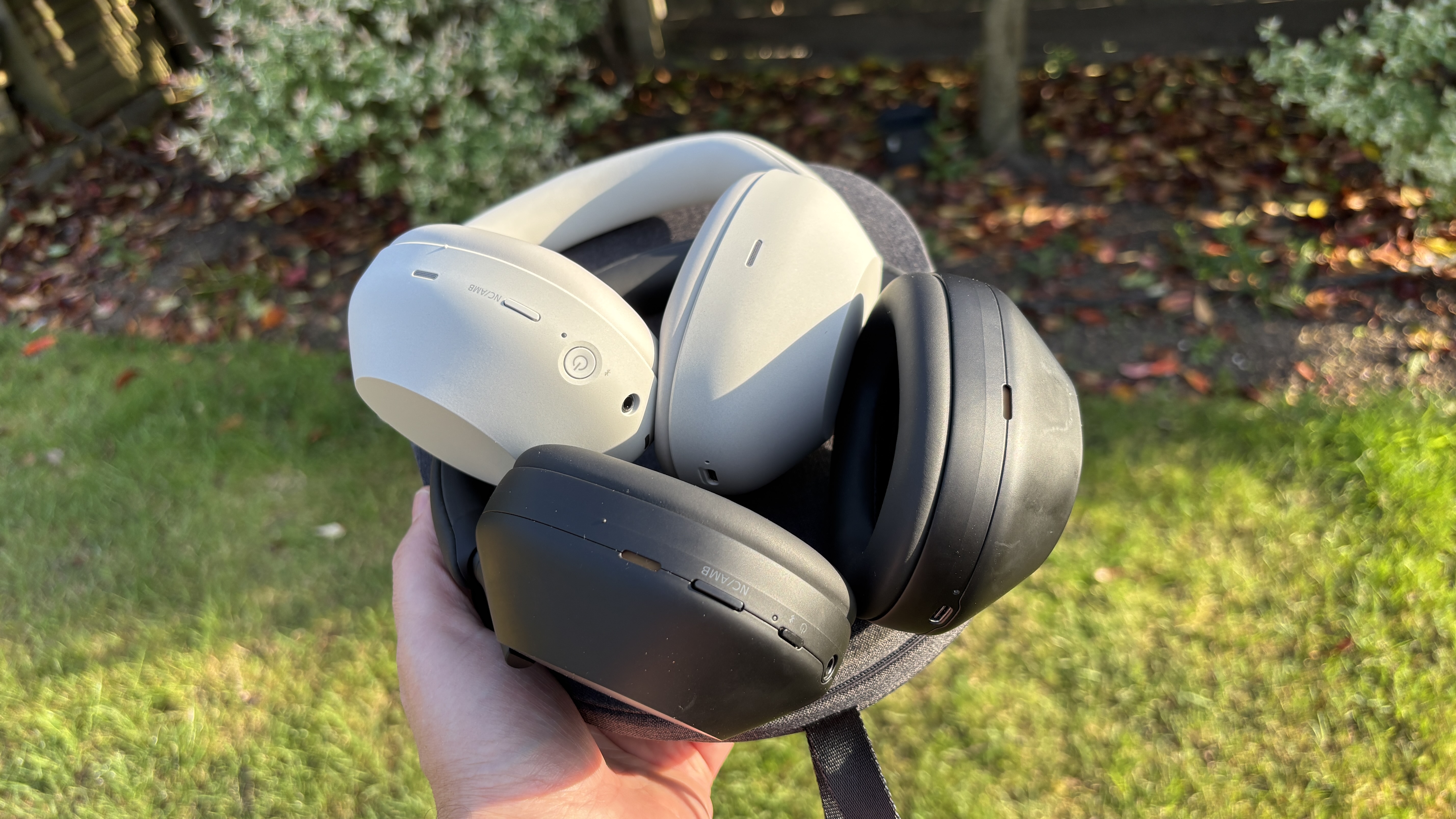
Sony’s claimed advancements in noise-cancelling and call quality for the WH-1000XM6 centre around the number of mics used.
The total mic count has gone up from eight on the WH-1000XM5 to 12 on the WH-1000XM6. There are six on each earcup, four spaced around the outside edge and two placed inside, beneath the removable ear pads. The outer microphones are now covered by a mesh which has been redesigned to further reduce wind noise.
Where the WH-1000XM5 had Auto NC Optimiser, the XM6 goes a step further with its adaptive NC optimiser, which constantly adapts to changes in your environment as you’re moving around. You can’t manually customise the ANC and set different levels like you can with the Bose rival.
And, stood in the garden listening out for passing traffic, the Sonys isolate us extremely well. They present a nice clean, rumble-free background through which you can listen to music.
Low-end and midrange noise are contained exceptionally well, especially as we try to navigate London's underground system. The Bose QC Ultra Headphones might give the impression they are marginally more effective on the ANC front, but not everyone finds the way they handle noise comfortable.
And their ANC performance isn’t as natural, sophisticated or subtle as the Sonys, which will make the WH-1000XM6 the better option for a lot of people. We found the Sonys to be wonderfully consistent in dealing with bass and midrange rumblings and just giving you a nice clear background on which you can place your music.
When you’re making calls on the WH-1000XM6, the three exterior mics closest to your mouth are used, and work with beamforming AI to help remove external noise and concentrate audio on your voice (the WH-1000XM5 only had two microphones helping).

And the call quality on the WH-1000XM6 is superb. Sony’s precise voice pickup technology is back and, with the help of those mics and the beamforming AI, the WH-1000XM6 do a fantastic job of cutting out background noise.
In the Sony Sound Connect app there’s a setting which focuses on capturing your voice when making a phone call and we recommend this is ticked too.
During testing, we find noise more or less completely cut out of the conversation, leaving our voice isolated with a quiet background. The person on the other end of the line has no trouble hearing what we say, even when there was some wind and traffic noise to contend with.
It’s a solid step up from the WH-1000XM5 and a bigger step up from close rivals like the Bose QuietComfort Ultra Headphones, Bowers & Wilkins Px7 S3, and even the more expensive AirPods Max can’t compete with the Sonys.
Sound
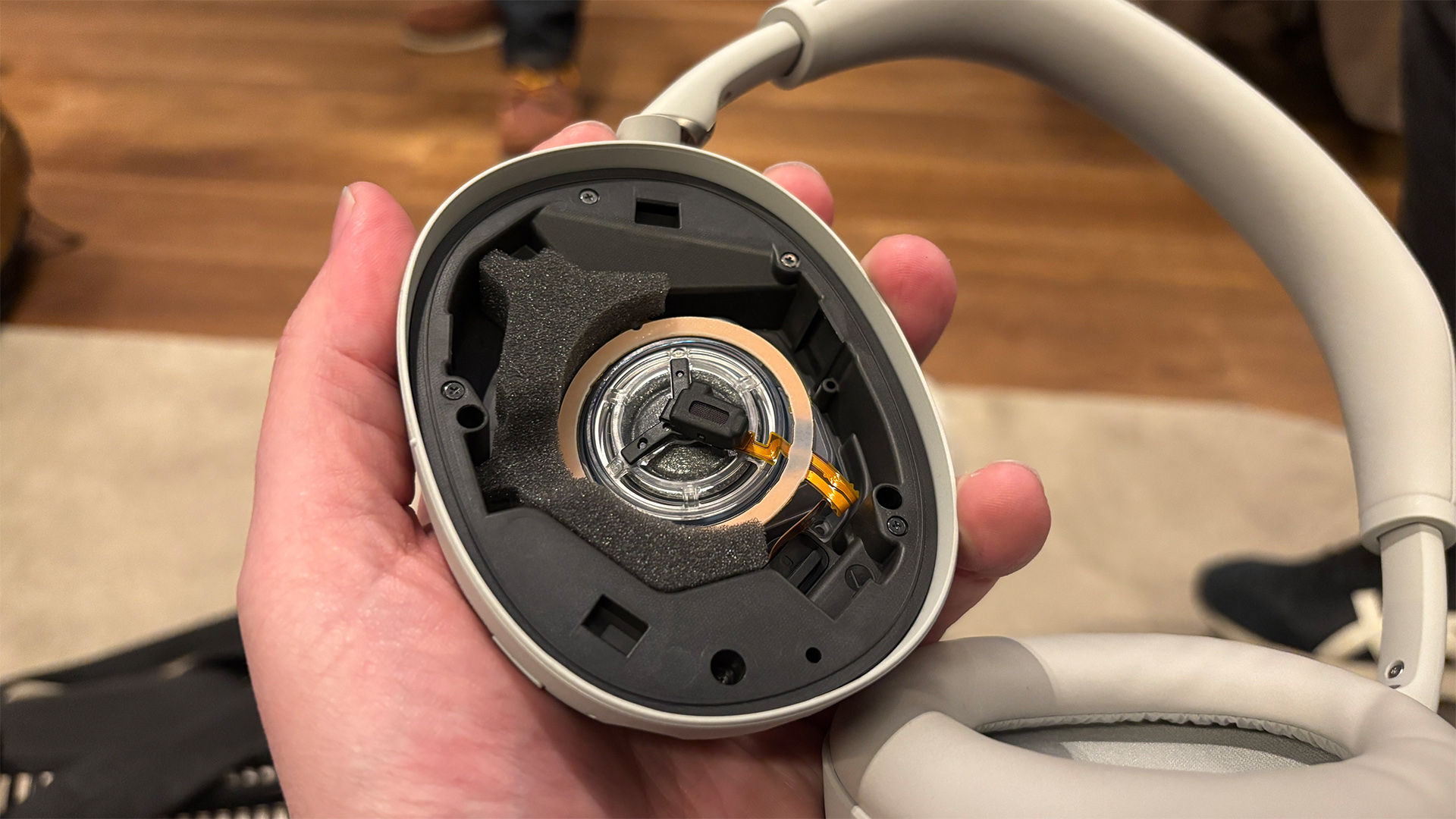
So far, everything about the WH-1000XM6 has been positive, but has Sony managed to give the headphones the sound quality a flagship pair demands?
The answer is a resounding yes.
The WH-1000XM6 deliver the most detailed, dynamic, precise and open sound we’ve heard from a wireless Sony flagship. The headphones just seem capable of diving into any track you play and extract an unbelievable amount of information.
We start with Billie Eilish’s No Time To Die and the level of intimacy created by the Sonys is very special.
The delicacy of her vocal and the piano at the start of the track is explicitly communicated. The amount of space around the individual key strokes means you can hear the full dynamic contrast. Her vocal oozes texture and emotion and you can picture just how close she is to the microphone when recording the track.
You get to enjoy every element individually, but it all gels together cohesively. The undercurrent of piano, the rumble of the drums, the strings and the texture of the subtly bellowing bass notes in the sound field all combine to draw you in.
It feels as though there’s a bit more of an emphasis on voices with the WH-1000XM6 compared with the previous generation, but this was after a couple of days' use, and we think it’s likely to calm down after even more running in. We’ll be reporting back on this in the coming weeks.
We switch to Eminem’s Till I Collapse and the Sonys waste no time getting into a more aggressive headspace, firing out Eminem’s vocal with venom. Whether it’s Em spitting lyrics, the crisp clapping or the power and solidity in each bass hit, the Sonys really hammer home the intensity and intent behind the track.
Every edge sounds precise and sharply drawn and hits you with a sharp precision. The song demands attitude and authority and the XM6 duly oblige with a fantastic sense of rhythmic drive.
We try Time from the Inception soundtrack and the WH-1000XM6 are a step above the XM5 in terms of detail, dynamics and openness. Play the same track through the Bose QuietComfort Ultra Headphones, and it isn’t a fair fight – the Bose sound out of their depth.
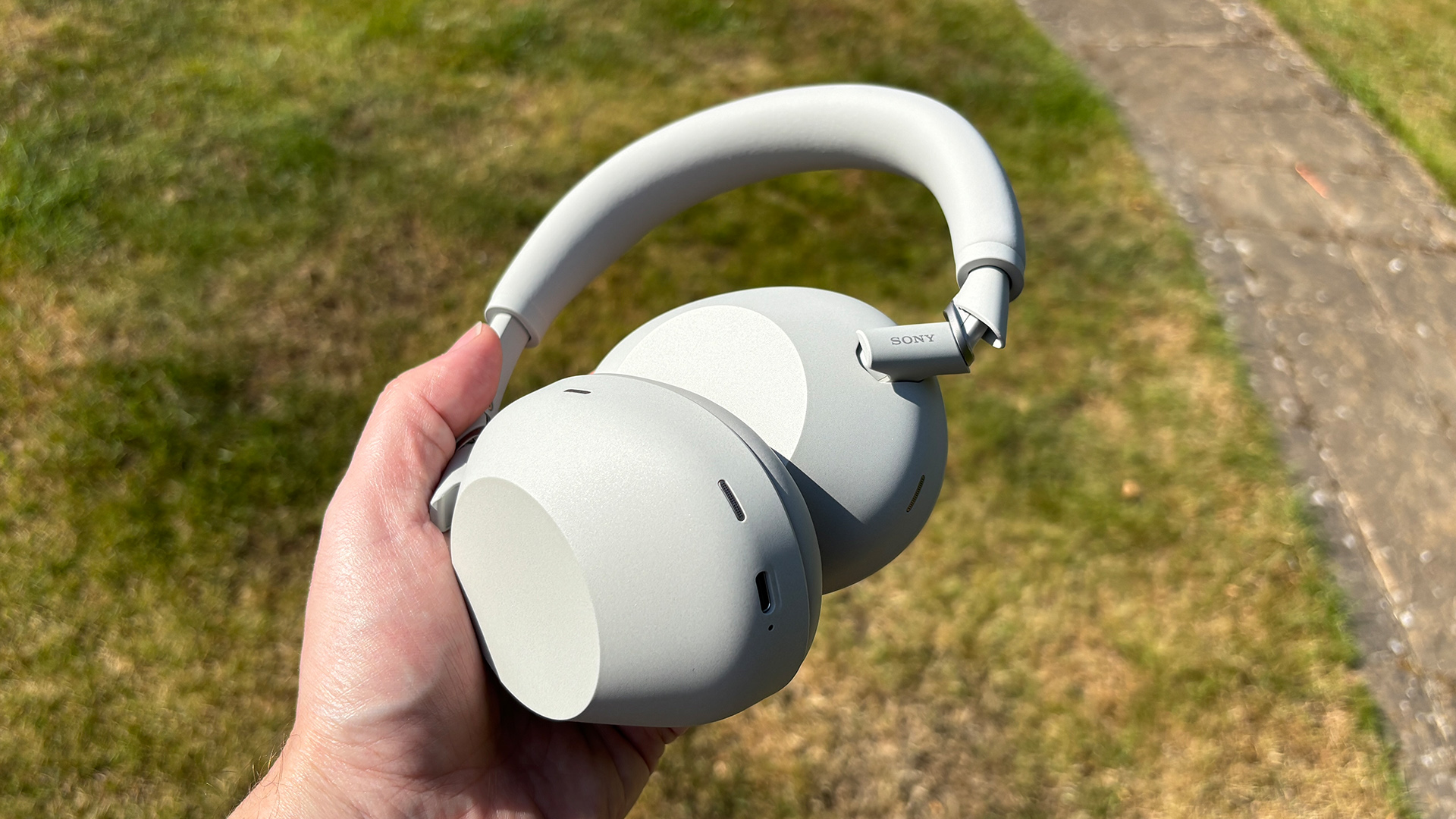
The Ultras sound quite superficial, like they’re barely scratching the surface when it comes to resolution and insight. They’re also lacking some composure and refinement at the top end in comparison.
The Sonys sound much more precise in their placement of instruments. The way the headphones draw the edges of strings feels like they are extracting every ounce of information possible, leaving nothing left in the tank. The Bose sound is smeared and lacking clarity in comparison.
The track might be a slow burn at the start, but the Sonys communicate the build-up to the dramatic, exciting climax effortlessly, and stir your senses even though there’s no picture.
The Bowers & Wilkins Px7 S3 are equal to the Sonys, especially when it comes to precision and fine detail. The Bowers sound better defined, with the Sony's bringing a greater sense of expressiveness. We can see the merits in each of their different flavours.
Finally we make a quick pit-stop to test the WH-1000XM6’s bass performance. We cut straight to the chase and call upon Massive Attack’s bass-tastic Angel.
Those thick bass notes sound meaty yet well-defined, while percussion has a snap and sense of laser-guided precision – there isn’t a single note that lingers longer than it needs to. It’s a powerful, engaging listen.
Verdict
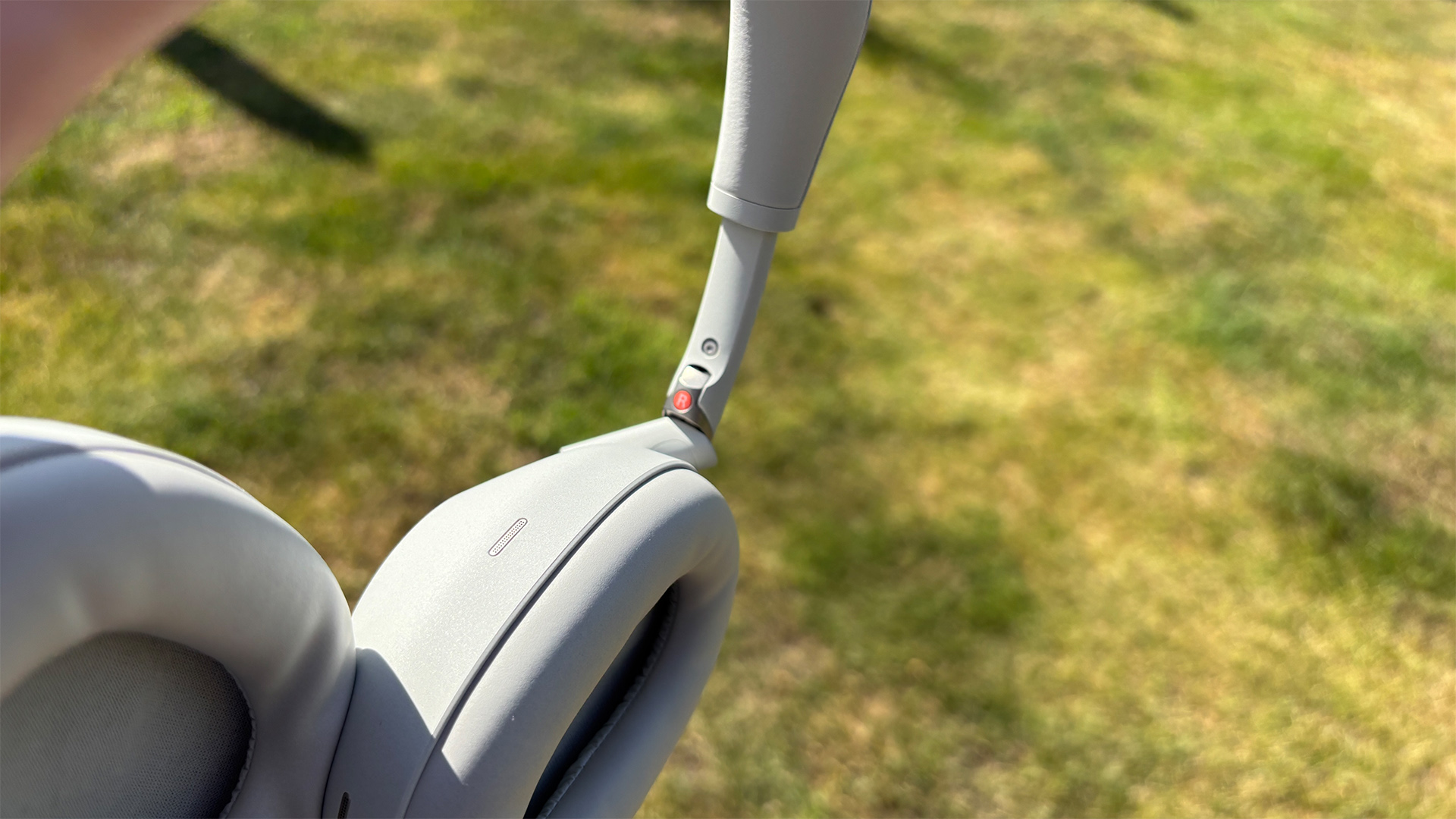
It feels like the Sony WH-1000XM6 have been a long time coming, and we are pleased to tell you they have been well worth the wait. They’re the best-sounding flagship pair we’ve heard from Sony to date, which is no mean feat.
Sensible changes to the design will please many, and the fact that the WH-1000XM6 are packed with new and improved features, excellent noise-cancelling and even better call quality simply adds to the list of great reasons to take the plunge.
Has Sony just set a new benchmark at this price point? Quite possibly.
Review published: 15th May 2025
SCORES
- Sound 5
- Features 5
- Comfort 5
MORE:
Read our review of the Bose QuietComfort Ultra Headphones
Also consider the Bowers & Wilkins Px7 S3
Sony WH-1000XM6 vs Bowers & Wilkins Px7 S3: which five-star wireless headphones are better?
Sony WH-1000XM6 vs WH-1000XM5: should you upgrade?
Sony WH-1000XM6 vs Bose QuietComfort Ultra Headphones: which ANC headphones are better?
Andy is Deputy Editor of What Hi-Fi? and a consumer electronics journalist with nearly 20 years of experience writing news, reviews and features. Over the years he's also contributed to a number of other outlets, including The Sunday Times, the BBC, Stuff, and BA High Life Magazine. Premium wireless earbuds are his passion but he's also keen on car tech and in-car audio systems and can often be found cruising the countryside testing the latest set-ups. In his spare time Andy is a keen golfer and gamer.
- Ketan BharadiaTechnical Editor
You must confirm your public display name before commenting
Please logout and then login again, you will then be prompted to enter your display name.
